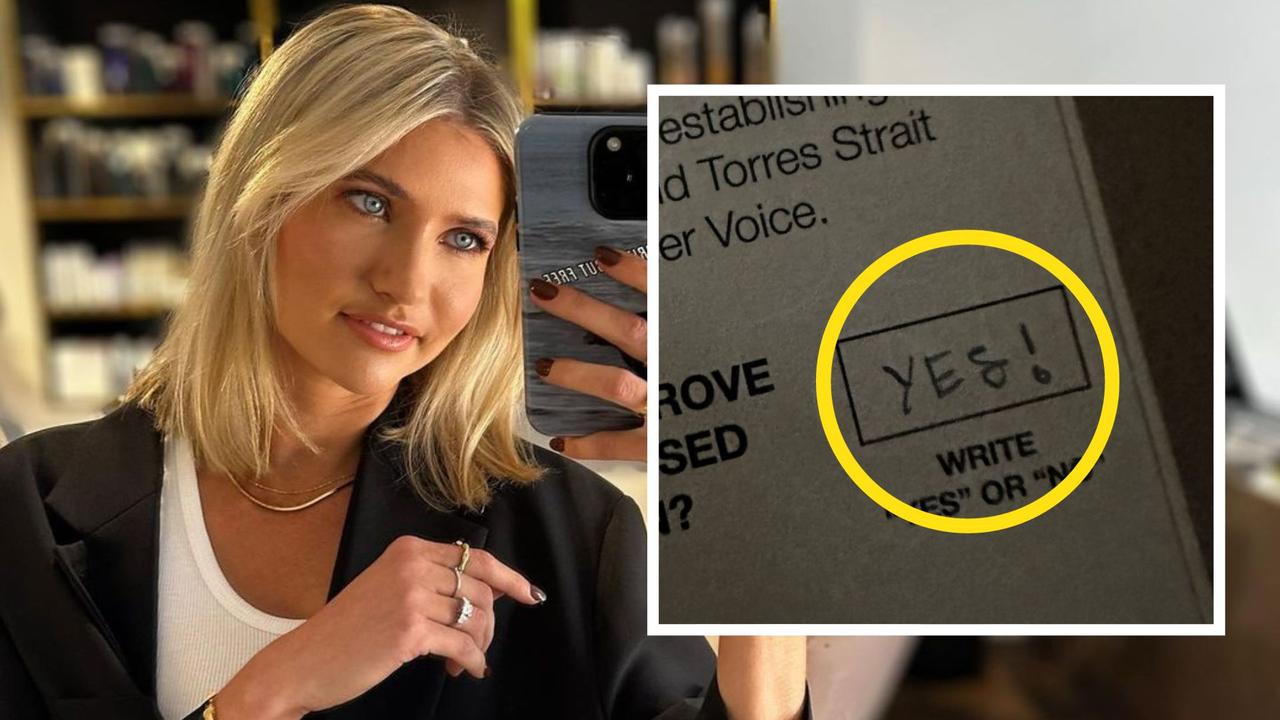Among the early voters was Sydney influencer Claudio Bursill, aka Miss Double Bay, who shared her enthusiastic Yes vote to her followers.
But she was quickly told her ballot may not be valid because of one small detail.
In an innocent post to her Instagram stories – available to almost 58,000 followers – Ms Bursill showed her ballot complete with a bold “YES!” written in the required box.
She used the picture to tell fans there was a “pop up voting booth” at Bondi Junction in Sydney’s east for those wanting to vote before October 14.
The post was innocent enough, but followers were quick to tell her she may have stuffed up her vote.
A follower messaged her, warning her the vote looked “invalid because of the exclamation mark” she added after the Yes.
“Guys I think I f***ed up!” Bursill wrote in a follow-up story.
“Don’t put an exclamation mark or anything else rather than ‘yes’ on your sheet.”
But almost as quickly as the panic started, another follower got in touch to say the worry was potentially a “false alarm”.
“No it’s still valid! Don’t worry,” they wrote in a message that Bursill also shared.
“But yes it’s better to avoid putting any other markings in the box other than YES.”
The referendum is kind of a big deal, it’s not only about changing the nation’s highest legal document, it’s also a first for many Australians.
And because voting in a referendum is unlike an election, the Australian Electoral Commission has made it clear exactly how Aussies can make their vote count.
In short, voters need to write clearly, in English “Yes” or “No” in response to the referendum question:
“A Proposed Law: to alter the Constitution to recognise the First Peoples of Australia by establishing an Aboriginal and Torres Strait Islander Voice. Do you approve this proposed alteration?”
The AEC has advised people against using ticks or crosses – a rule that has been in place for the past 30 years and for six referendums – or any other symbols that could leave “the formality of your vote open to interpretation or challenge”.
So write “Yes” or “No” clearly in the box, in English. No ticks. No crosses. Even just writing a “Y” or an “N” to indicate your vote risks an informal vote. So spell it out.
As for whether an exclamation point added by particularly passionate voters could render their Voice invalid, an AEC spokesman told news.com.au it is “unlikely to affect whether or not a vote can be counted”.
“If the intention of the voter is clear, the vote will be counted,” the spokesman said.
“The voting instructions are simple and we encourage everyone to simply write yes or no in full. Nothing else.”
At the last referendum in 1999, only 0.86 per cent of the votes were counted as informal.
More than 2.2 million Aussies have voted early on the Indigenous Voice to Parliament, the AEC has counted, while almost 2 million people had applied for a postal vote.
Early voting officially closes at 6pm on Friday, October 13. People can find early polling spots by using the AEC’s “Where Can I Vote?” tool on their website.
Voting is compulsory in Australia. Failure to vote as an eligible citizen aged 18 years and over will lead to a $20 fine.
Ballots officially close on Saturday, October 14 at 6pm when the AEC will begin counting the nation’s votes.
